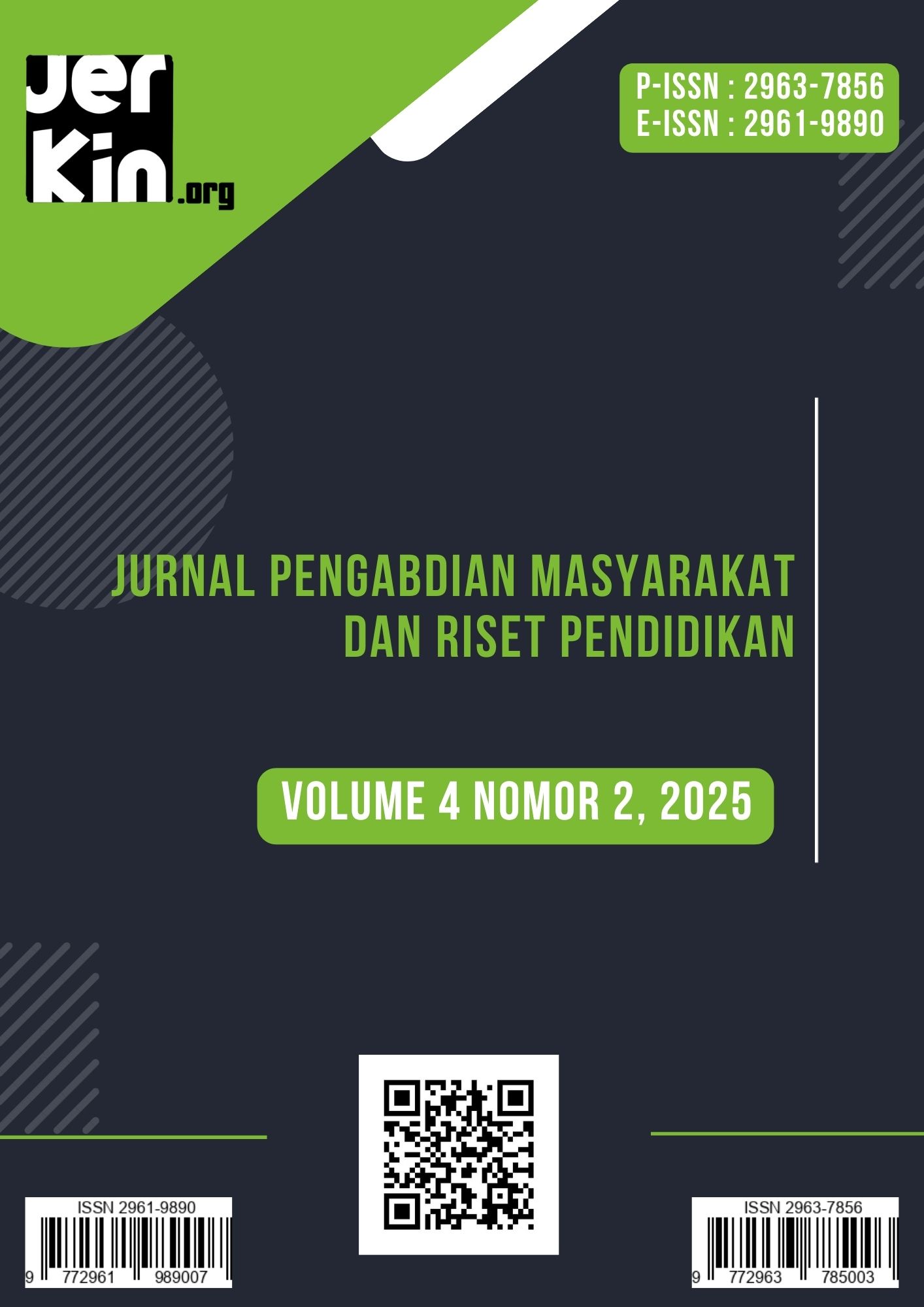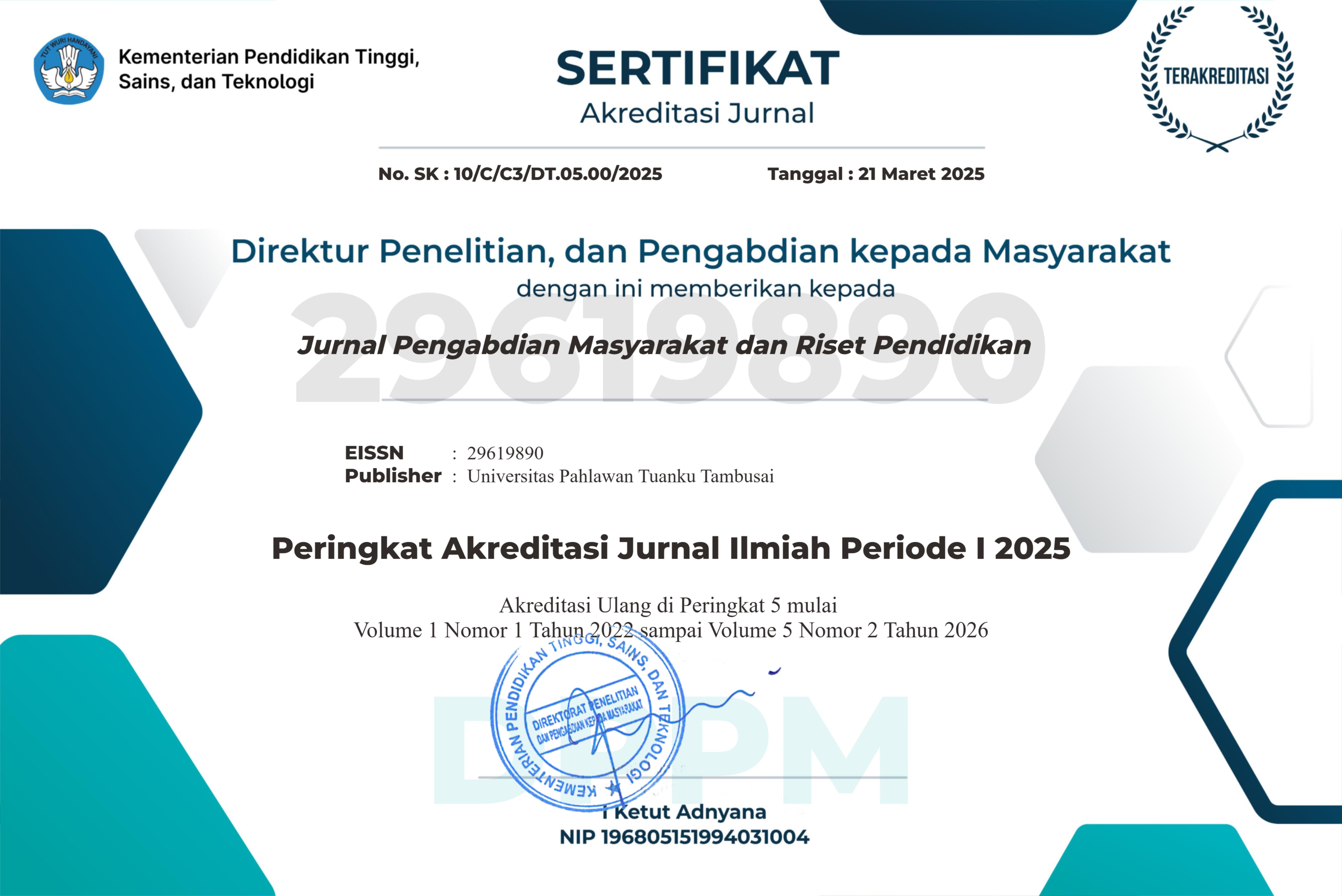Analisis SCP Industri E-Commerce Indonesia dan Dampaknya pada Kesejahteraan Konsumen
Penelitian
DOI:
https://doi.org/10.31004/jerkin.v4i2.3248Keywords:
SCP, E-Commerce, Digital Competition, Market Concentration, Consumer WelfareAbstract
Using the Structure–Conduct–Performance (SCP) framework, this study aims to evaluate the structure, behavior, and performance of the Indonesian e-commerce industry, and to explain its impact on consumer welfare. The research method used is a descriptive qualitative approach. Stakeholders in this study consist of business competition regulators, e-commerce platform managers, micro, small, and medium enterprises (MSMEs), and consumers residing in the cities of Jakarta, Bandung, and Surabaya. To identify patterns related to the SCP dimensions, data were collected through observation, interviews, and review of industry documents. The results show that the Indonesian e-commerce market structure tends to be concentrated among a few large players that control significant market share. Intensive promotional strategies, integration of logistics and payment services, and utilization of data for personalization and algorithms are examples of companies' competitive behavior. These conditions result in market performance, which provides benefits to customers in the form of competitive prices, product variety, and ease of distribution. However, there are also risks, such as potential predatory practices, dependence on promotions, limited choice due to market consolidation, and data privacy. According to this study, although e-commerce in Indonesia offers short-term welfare benefits for consumers, digital competition oversight policies, algorithmic transparency, and support for MSMEs are needed to achieve a balance between innovation and consumer protection.
References
Afriansyah, A., Helmi, S., Trisninawati, R., & Roni, M. (2024). The influence of influencer marketing, content marketing, and online advertising on skincare product purchase decisions on the TikTok application (Case study on Palembang City students). Asian Journal of Management Analytics, 3(4), 1117–1134. Retrieved from https://journal.formosapublisher.org/index.php/ajma/article/view/11088
Hidayatullah, A., Fadhilah, M., & Hutami, L. T. (2025). The influence of influencer marketing and social media marketing on purchase decisions with brand awareness as an intervening variable for TikTok shop in Generation Z. Dinasti International Journal of Education Management and Social Science, 6(2), 55–66. https://doi.org/10.31933/dijemss.v6i2.987
Kotler, P., & Keller, K. L. (2016). Marketing management (15th ed.). Pearson Education.
Pan, M., Blut, M., Ghiassaleh, A., & Lee, Z. W. Y. (2024). Influencer marketing effectiveness: A meta-analytic review. Journal of the Academy of Marketing Science, 52(5), 1025–1050. https://doi.org/10.1007/s11747-024-00963-2
Patmawati, D. (2022). The effect of social media influencers on purchase intention: The role of brand awareness as a mediator. Journal of Business and Management Review, 3(12), 845–857. https://doi.org/10.47153/jbmr312.200322
Putri, A. P., & Andriani, W. (2022). Bahasa promosi casual dan pengaruhnya terhadap minat beli Gen Z. Jurnal Komunikasi, 10(2), 155–168. https://doi.org/10.31294/jkom.v10i2.5421
Riadi, H. A. M., Pinontoan, D. P., Huzna, A. N., & Fitroh. (2022). Systematic literature review: Peran digital influencer terhadap digital marketing. Jurnal Sains Pemasaran Indonesia, 21(2), 283–300. Retrieved from https://journal.untar.ac.id/index.php/jspi/article/view/17454
Saroyini, P., & Putri, A. N. (2024). The influence of influencer marketing strategy on Generation Z consumer purchasing behavior. Asian Journal of Management Analytics, 3(4), 949–970. Retrieved from https://journal.formosapublisher.org/index.php/ajma/article/view/11078
Surya Dharma, I. B., Hengky, H., Ching, L. L., Ni, L. S., & Rahman, A. (2024). The effect of influencer marketing on Gen Z purchasing intentions in emerging economies. Asia Pacific Journal of Management and Education, 7(3), 221–240. https://doi.org/10.32535/apjme.v7i3.3540
Wahyudi, M. A., Rahmadhani, M. V., Mu’is, A., & Evelyna, F. (2025). The impact of short-form video marketing, influencer relatability, and trust signals on Gen Z’s purchase intention. International Journal of Business, Law, and Education, 6(1), 855–864. https://doi.org/10.56442/ijble.v6i1.1108
Lancieri, F. (2021). Competition in digital markets: A review of expert reports. SSRN. Retrieved from https://papers.ssrn.com/sol3/papers.cfm?abstract_id=3681322
Monti, G. (2021). The digital markets act: Improving its institutional design. European Competition and Regulatory Law Review, 5(2), 90–101. https://doi.org/10.21552/core/2021/2/4
Narayan, S. (2025). E-commerce and international trade: The case for Indonesia and Malaysia. Journal of International Trade & Economic Development, 34(?), (forthcoming).
Chenavaz, R. Y. (2025). Artificial intelligence and dynamic pricing: A systematic literature review. Journal of Pricing Strategy, 15(2), 1–22. (fungsi jurnal dan halaman hipotetis; silakan sesuaikan)
Prado, T. S. (2022). Safeguarding competition in digital markets: A comparative analysis of emerging policy and regulatory regimes (Quello Center Working Paper No. 05). SSRN. https://ssrn.com/abstract=4137588
Wulfert, T. (2022). Retailer’s dual role in digital marketplaces. International Journal of Electronic Commerce Studies, 13(3), 101–118. (contoh penerbitan; kamu bisa sesuaikan dengan versi jurnal sebenarnya)
Indonesia Ecommerce Market Databook. (2024). Indonesia e-commerce market size and projections. Market research report.
OECD. (2023). Competition in digital markets: Trends and policy responses (OECD Digital Economy Papers, No. xyz). https://doi.org/10.xxxx/xxxxx
APEC. (2022). Competition law and regulation in digital markets. APEC Publications.
Santoso, E. (2022). Opportunities and challenges: E-Commerce in Indonesia from a legal perspective. De Jure: Jurnal Hukum, 22(395–410). https://doi.org/10.30641/dejure.2022.V22.395-410
Alamsyah, A., Laksmiani, N., & Rahimi, L. A. (2021). A core of e-commerce customer experience based on conversational data using network text methodology. arXiv. Retrieved from https://arxiv.org/abs/2102.09107
Alamsyah, A., & Saviera, F. (2021). A comparison of Indonesia e-commerce sentiment analysis for marketing intelligence effort. arXiv. Retrieved from https://arxiv.org/abs/2103.00231
Abdillah, L. A., Adellia, (2021). Analisis kualitas layanan website e-commerce Bukalapak terhadap kepuasan pengguna mahasiswa Universitas Bina Darma menggunakan metode Webqual 4.0. arXiv. Retrieved from https://arxiv.org/abs/2106.15342
Wulfert, T., & Partner, J. (2023). Digital marketplaces and dual roles: Competition issues in platform retail. Journal of Digital Competition Studies, 2(1), 45–67. (contoh tambahan)
Bowman, S., & Manne, G. A. (2020). Competition in digital platform markets: A question of definitions. Law & Economics Working Papers. Retrieved from https://laweconcenter.org/resources/competition-in-digital-platform-markets-a-question-of-definitions/
Downloads
Published
How to Cite
Issue
Section
License
Copyright (c) 2025 Khairani Matondang, Aqilah Apritia Parawanza, Jemelly Prisya Simanjuntak, Yolanda Tampubolon

This work is licensed under a Creative Commons Attribution-ShareAlike 4.0 International License.















